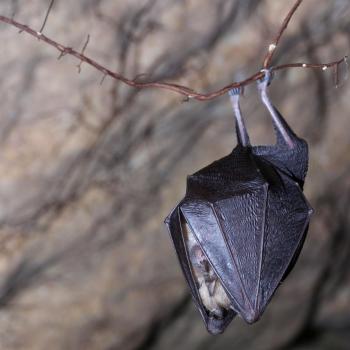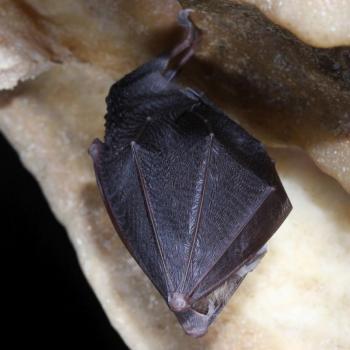Lesser Horseshoe Bat
-
Rhinolophus hipposideros, (Bechstein, 1800)
It is one of the smallest bats in Europe and the smallest of the family Rhinolophidae with wingspan up to 25 cm and weight from 4 to 7 grams. The fur on the back is brownish-gray or brownish-yellow, while on the abdomen it is white-gray. The upper protrusion of the saddle is shorter than the lower.
It spreads throughout Europe (except the Netherlands and the Scandinavian countries) and in many Mediterranean islands, Ukraine and northwest Africa. It is also found in the western Arabian Peninsula and through the Middle East and Anatolia, in the Caucasus, Iran and up to the Himalayas.
It is one of the most common bats in Greece, as it has been found throughout the mainland and in many of the Ionian and Aegean islands and Crete
The Lesser Horseshoe Bat is found in areas with a mosaic of habitats, with a preference in forests, arable crops and areas with fresh water and rich vegetation, even in residential areas. In fall and winter gets into torpor inside caves, mines and other underground roosts. Breeding colonies are formed on roofs of houses, abandoned buildings and remote chapels. In the southern lowlands they are also found in caves and mines.
It often shares its roost with other rhinolophids, but also with species of the Myotis and Plecotus genera, and its colonies rarely exceed 100 individuals. It has a very flexible flight and usually hunts near bushes or under trees, within a few kilometers of its shelter. It chases even in winter when the weather is mild. It mainly feeds on diptera (family Tipulidae but also mosquitoes), hymenoptera, neuroptera and small nymphs.
Mating in this species occurs in autumn or winter, inside roosts. Females give birth to only a single baby (usually starting in their second year of age), but not every year. Newborns are trained in flight from their mothers three weeks after birth and are weaned 2-3 weeks later. The maximum recorded age is 21 years.
It is included in Annex II of the Bern Convention and the Bonn Convention and in Annexes II and IV of EU Directive 92/43. It is also protected by and UNEP/EUROBATS and in Greece by the Presidential Decree 67/81. Due to its wide distribution, it is considered as a species of Least Concern (LC) both in Greece and worldwide (IUCN). However, in the northern countries of continental Europe, its populations have suffered dramatic declines due to the degradation of its roosts (e.g. use of chemical wood preservatives) and its other habitats (e.g. use of agrochemicals).




